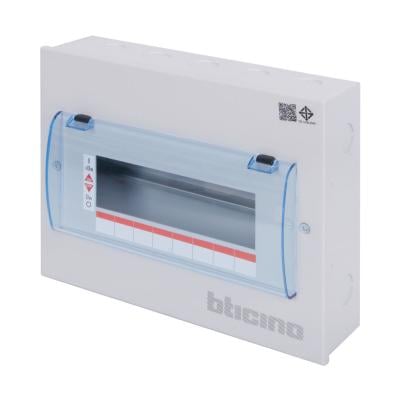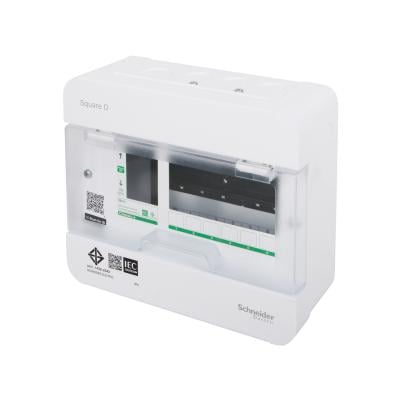The Consumer Unit: The Heart of Your Home

No matter if you live in a single-family home, townhouse, condo, or apartment, you can't avoid using electricity. Electricity has become an essential part of our lives. And when we think of electricity, the first thing that comes to mind is danger. To prevent these dangers, the consumer unit, or electrical panel, was invented.
The consumer unit is a very important device for the electrical system in a home. It controls the entire electrical system, and it is often referred to as the heart of the home. However, even though the consumer unit is the heart of the home, we may not know this heart well enough. We may be concerned about the dangers of electricity and be afraid to touch it. To help us understand this type of electrical device better, I would like to invite you to learn about the consumer unit in the following topics.
1. How a consumer unit works
A consumer unit is a box that houses the main electrical components of a home, building, or small space such as a room. It is used for single-phase 220-volt electricity only. (If more than that, such as in a building or factory, there will be multiple consumer units, each controlled by a load center.) Inside the consumer unit, there are the following components: Main circuit breaker: This breaker controls the entire electrical system of the home. It can cut power to the entire home immediately. Subcircuit breakers: These breakers control electricity to individual points within the home. Residual current devices (RCDs): These devices protect people from electric shock. All of these components are arranged in a row in a box that is easy to open and close.

2. Types of consumer units
There are two main types of consumer units:
• DIN-rail consumer units
These are the most common type of consumer unit. They are installed by connecting wires to the breakers and then running the wires from the main breaker to the sub breakers on the rail. This type of installation takes longer and is more expensive than plug-in consumer units, but DIN-rail consumer units are less expensive and more durable.

Consumer Unit Din Type 6 Ways BTICINO BTC/6 DIN Grey
• Plug-on consumer units
Plug-in consumer units are a newer type of consumer unit that is installed by simply plugging the breakers into the unit. This type of installation is faster and less expensive than DIN-rail consumer units, but plug-in consumer units are more expensive and less durable.

6 Ways Consume Unit CLASSIC PLUS SCHNEIDER S9HCL16 White
3. How to choose a consumer unit
When choosing a consumer unit, the most important factor to consider is the number of slots in the unit. Most consumer units have between 4 and 20 slots, depending on the brand and model. Each slot can accommodate a single appliance, such as an air conditioner, or multiple appliances, such as light bulbs. It is important to choose a consumer unit with enough slots to accommodate your current and future appliances. As a general rule of thumb, you should allow for 2-3 slots for future appliances.

4. Safety tips for installing a consumer unit
Installing a consumer unit should be done by a qualified electrician. Don't risk doing it yourself if you don't have the necessary knowledge. However, as a homeowner, you can still help to ensure the safety of the installation by following these tips:
• Install the consumer unit in a location that is easily accessible and away from moisture and water. This will make it easier to service the unit and reduce the risk of electrical shock.
• Choose wire sizes that are appropriate for the amperage ratings of the breakers.
• Connect the neutral wire (the wire that does not carry electricity) from the electric meter to the ground before connecting it to the main breaker. This will ensure that the neutral wire that enters your home is truly at zero potential.
• Install the grounding system according to electrical standards.
• Turn off the main breaker before servicing or replacing any components. This will help to ensure your safety while you are working.

So that's it for the consumer unit story. If you're new to electrical work, it may take some time to understand everything, but it's not too difficult. This will help you communicate with the electrician who is installing the unit with confidence and ensure that the electrical appliances in your home are truly safe.
Credit for images: stoneselectricalsolutions.co.uk, ryanltd.co.uk
• You can buy Consumer unit at our stores or online shopping. Click
Other interesting article:
Recommended products














